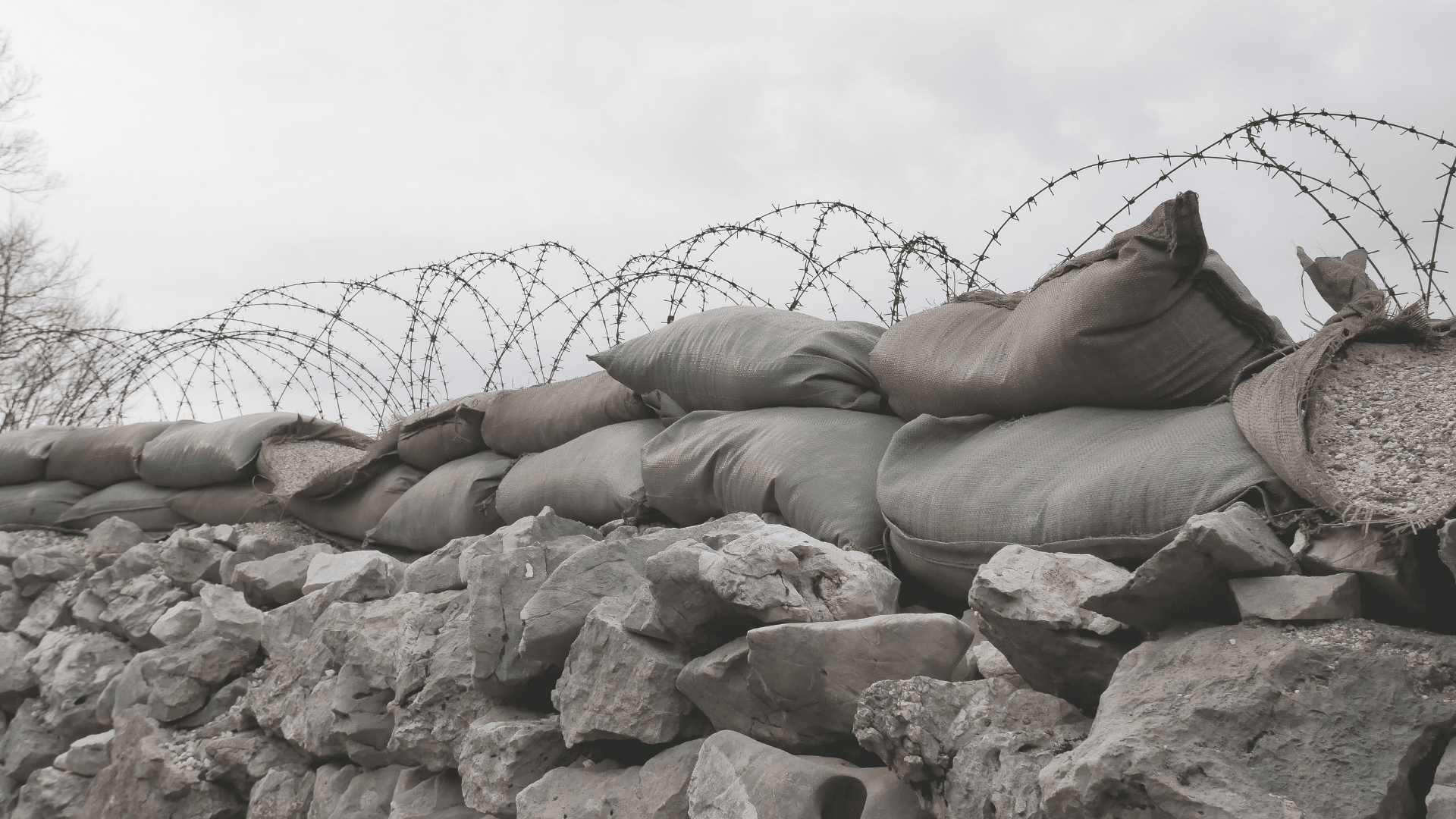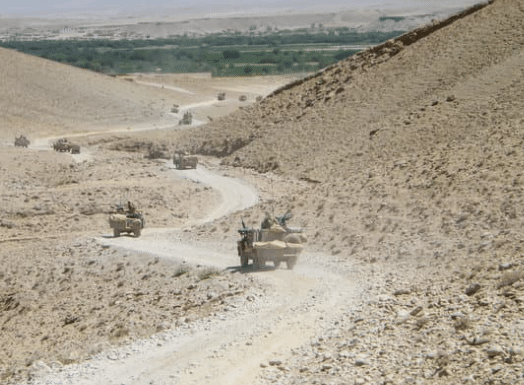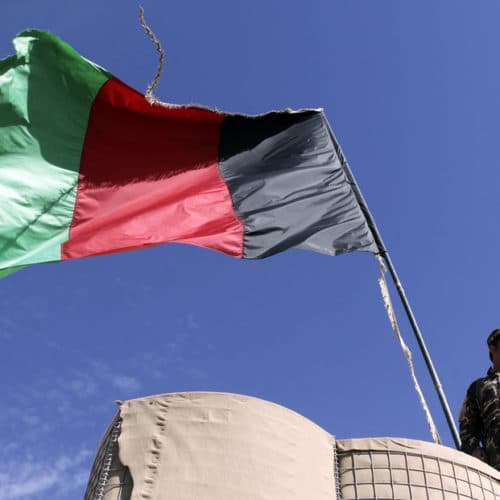The plight of civilians in heavily populated urban areas is especially worrying given the recent Taliban onslaught on cities and provincial centres. Civilians in provincial towns like Lashkargah in southern Helmand province are bearing the brunt as the fighting has worsened. Media reports show that local residents are trapped inside their homes while fighting between government forces and Taliban insurgents rages on in the streets. Dead bodies, including of young children litter the streets as people are too afraid to venture out and collect the dead.
With thousands already displaced, the government has urged the residents of Lashkargah to evacuate their homes as security forces prepare to launch a clearance operation against insurgents holed up inside the city. Taliban and government ground offensives and especially airstrikes by the Afghan National Army – and in the last couple of days by the US Air Force using the much feared long-range B-52 bombers and C-130 gunships – are causing the most harm to civilians but also damage vital infrastructure including homes, shops and health facilities. The intensification of violence in urban areas, and greater reliance on air power, as the last twenty years of conflict have shown, is likely to result in increased civilian casualties.
The logic of the law of armed conflict or International Humanitarian Law is also being lost in the intensity of the many battles being fought between Afghan security forces and Taliban insurgents. Senior Afghan army commanders, politicians and their army of Twitter trolls are openly calling for no quarter to be given to Taliban fighters. The Taliban have been accused of carrying out summary executions of Afghan soldiers who chose to surrender to the group. There have also been reports of forced disappearances and revenge killings by the Taliban in Kandahar and Ghazni.
The West’s Humanitarian Diplomacy in action
The so-called international community, unable or unwilling to do more, have resorted to issuing frantic declarations urging the warring parties to stop fighting, respect human rights and protect the civilian population. Confronted with Taliban unwillingness to heed such warnings, US and European diplomats have resorted to publicly shaming the Taliban into respect for human rights. In a moral travesty fast becoming the norm, the British Embassy in Kabul in a Twitter message condemned the Taliban’s disregard for Afghan lives in recent bouts of fighting and chastised the group that ‘this was not how legitimate powers or governments behave’.
this was not how legitimate powers or governments behave
Such statements, prematurely confirming diplomatic recognition on the Taliban, were preceded by public statements by some Western politicians indicating that their governments will be willing to work with the Taliban in the event of capturing governmental power. There has also been a flurry of diplomatic activities in the region as Afghanistan’s neighbours, near and far, hosted Taliban delegations urging the group to not allow terrorists groups of concern to these powers to operate from Afghanistan against their interests (for example, the anti-China East Turkistan Islamic Movement, or ETIM).
Statements and actions of this sort demonstrates to Afghans that most Western governments who until recently were heavily invested in Afghanistan, both militarily and in the form of civilian aid, have already written off the beleaguered Afghan government as talk of Afghanistan collapsing into more violence and civil war take centre stage.
Re-bordering Afghanistan
The UN estimated that 40 people were killed and more than one hundred were injured in a single day of recent fighting in Lashkargah in Helmand province. UN pleas to the warring parties to stop the fighting and negotiate peace have so far fallen on deaf ears. To the northwest, the Taliban already control most of the rural districts in Herat province as well as the two key border crossing points to Iran and Turkmenistan. Having cut off the provincial centre, the insurgents have amassed their forces for a final push to capture Herat city. It has an estimated population of half a million people and is considered one of Afghanistan’s five key political and economic regional hubs.
The beleaguered government forces with the aid of local militias and former mujahideen fighters have so far managed to prevent the Taliban’s takeover of this key provincial capital in the northwest. The fall of Herat, if it happens, will be a major blow to both public trust in the government and the morale of the Afghan security forces. The situation in Kandahar is even worse. There, the Taliban managed to capture Spin Boldak, the border district with Pakistan (and the border crossing). They have also breached the city defences and are currently fighting government forces inside the city. The fall of Kandahar, where the Taliban rose to power in the 1990s and which they consider as their spiritual capital, will be a huge loss for the government which will further embolden the Taliban to push for the capture of the capital Kabul.
While until recently civilians displaced by conflict in rural villages and districts typically sought safety by relocating to big cities like Kandahar (south), Mazar-i-Sharif (north), Herat (west), Jalalabad (east) and Kabul (central), the recent expansion of fighting to the proximity and sometimes inside major population centres such as Kandahar city and Herat city have further eroded the safety mechanisms open to Afghan civilians caught in the throes of conflict. With border crossings to neighbouring countries either under Taliban control or the scene of frequent fighting between government and insurgents, Afghanistan’s neighbours have thrown a security cordon around the country, involving fencing of borders and deployment of additional border guards, making it almost impossible for civilians to flee conflict and seek refuge outside their country.
Everyday existence for Afghan civilians, already battered by decades of conflict, has become even more brutal in recent weeks. The current upsurge in violence and the spread of fighting to major urban population centres such as Herat, Kandahar, Helmand and Kunduz – have turned these urban oases, where previously those fleeing the war in their villages sought refuge and safety, into death traps. With the adjoining districts and border crossings now in insurgent hands, Afghan civilians are trapped inside the cities while the Taliban push forward. The dramatic upsurge in violence has displaced hundreds of thousands of civilians inside the country, men like my friend Habib from the northern Kunduz province. As the fighting got closer to his family home, he had to abandon it and now lives with relatives in Kabul. Besieged for months, Kunduz city finally fell to the Taliban on Sunday.
With the siege of cities and closing of borders, Afghanistan is literally being turned into an open-air prison for civilians while different armed groups continue to intensify the violence threatening their lives and livelihoods.
an open-air prison for civilians
Unwelcome by neighbours, Afghans in urban areas may very well be forced to repeat the displacement dynamics seen in the early 1990s when fighting among rival mujahideen factions forced civilians to abandon their homes in cities and seek refuge with relatives in their ancestral villages and rural districts, where they were often unwelcomed as their arrival put pressure on limited resources such as shelter, food, jobs, land and water.
Orientalising Afghanistan
While the reality is grim enough, there has been much alarmist reporting from Afghanistan to the effect that now that foreign forces are withdrawing, Afghans are fleeing their country fearing Taliban violence. In some ways this kind of orientalist ‘representation’ of Afghanistan has fed into self-serving official narratives in the US, especially the US military in its earlier reluctance to fully withdraw troops from Afghanistan. The anticipated doomsday scenario following US troops withdrawal – a repeat of the early 1990s when factional militias viciously fought each other for the control of Kabul and other parts of the country or the possibility of Taliban military takeover of power and the flight of Afghans from cities – has generated highly problematic imaginaries that portray US and NATO forces as agents of civilised order whose presence was desired to save Afghanistan from Taliban ‘barbarians’ or gangs of ethnic warlord militias.
For these reasons it was less than comforting for me to watch so many enlightened Afghans opposing the withdrawal of US and NATO troops, as if Afghan voices or desires really mattered to the Americans. Granted, many were doing it because of legitimate concerns about the future of their country and their own safety. For example, there has been a vicious campaign of violence targeting Afghanistan’s minority Hazara community, which has been described in terms of a genocide. However, the irony of this discourse is that it wrongly portrays American troops as liberators and protectors of Afghans, or to paraphrase it in Gayatri Chakravorty Spivak’s terms, the withdrawal narrative can be understood as a case of ‘white men saving brown women from brown men’. This is of course deeply disconcerting given the role of American forces in the war, in militarising Afghan society, and especially its diplomatic efforts in the context of the botched peace process which many Afghans see as indirectly facilitating the return of the Taliban to power.
Abandoned by the world, Afghans turn to Allah
As fears of more violence grip Afghanistan and hopes of a political settlement gradually disappear, and with the rest of the world silently watching Afghans kill and maim one another, Afghans in Herat poured into the streets chanting ‘Allahu Akbar’, God is Great. A few days later the same cries were heard in the streets and alleys of Kabul, Khost, Nangarhar, Bamyan and Daikundi – it is quickly turning into a national phenomenon. With fighting entering the cities, Afghans are coming to the realisation that they are truly on their own now. The world seems to have washed its hands of Afghanistan and its problems. It is now up to Afghans themselves to ‘save’ their own country. In a sense, it represents a moment of hope for those of us who viewed the country’s military and economic dependence on NATO countries as morally and politically problematic. Yet, it is extremely difficult to ignore the severity of the military and humanitarian situation in Afghanistan right now.
it is now up to Afghans themselves to ‘save’ their own country
The chants of Allahu Akbar have been associated with popular rejection of the Taliban and support for Afghan security forces who are fighting the Taliban to prevent the fall of key provincial centres to the insurgents – in the last three days four such provincial capitals in northern Afghanistan fell to the Taliban. However, there is another, more humble, human side to these religious chants. To my mind, they symbolise the pain of a population battered by four decades of military violence. They speak to the utter loss of hope for peace and fears of an impending disaster among ordinary Afghans.
It is only all too human to seek refuge in God when the human capacity to cope with adversity is overwhelmed. When something is beyond our human ability to manage, we call for divine intervention in human affairs. Sceptical minds will continue to ask if God is even listening. The faithful among us will blame human wickedness and our own depravity for the current state to justify God’s abandonment of his creation – and His wrath as a deserving punishment for our collective failures.







